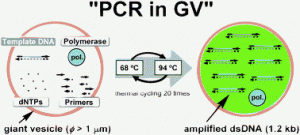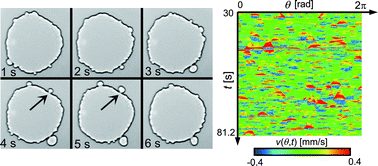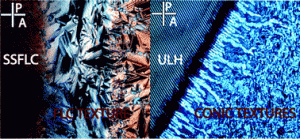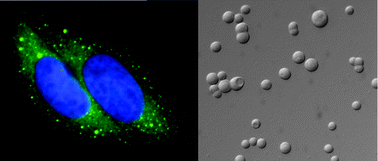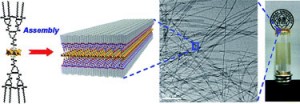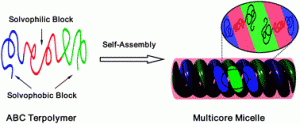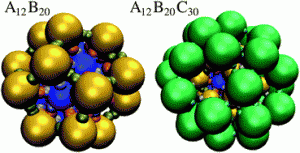 Reversible tuning of the hydrophobic–hydrophilic transition of hydrophobic ionic liquids by means of an electric field. Hydrophobic ionic liquids can be tuned to be hydrophilic under a strong external electric field say scientists at Hefei Normal University, China. The research could find applications electrochemistry and fuel cell technology. Soft Matter, 2011, DOI:10.1039/C1SM05027C (Advance Article)
Reversible tuning of the hydrophobic–hydrophilic transition of hydrophobic ionic liquids by means of an electric field. Hydrophobic ionic liquids can be tuned to be hydrophilic under a strong external electric field say scientists at Hefei Normal University, China. The research could find applications electrochemistry and fuel cell technology. Soft Matter, 2011, DOI:10.1039/C1SM05027C (Advance Article)
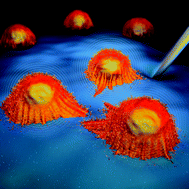 How far cardiac cells can see each other mechanically. Cardiac cells can be mechanically coupled even when separated by a soft solid medium say scientists at University of Illinois at Urbana-Champaign, USA. The interaction originates from the mechanical stretch induced by one cell on the other through a deformable media. The team say that the findings could have implications for myocardial infarction caused when cardiac tissues become stiff due to fibrotic scar formation. Soft Matter, 2011, DOI:10.1039/C0SM01453B (Advance Article)
How far cardiac cells can see each other mechanically. Cardiac cells can be mechanically coupled even when separated by a soft solid medium say scientists at University of Illinois at Urbana-Champaign, USA. The interaction originates from the mechanical stretch induced by one cell on the other through a deformable media. The team say that the findings could have implications for myocardial infarction caused when cardiac tissues become stiff due to fibrotic scar formation. Soft Matter, 2011, DOI:10.1039/C0SM01453B (Advance Article)
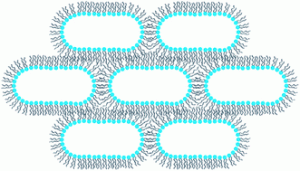 A lyotropic inverse ribbon phase in a branched-chain polyoxyethylene surfactant: pressure effects. In this Hot Paper a team from Imperial College London, University of Manchester and ESRF discover an inverse ribbon phase that is stabilised by the application of hydrostatic pressure. The team adjusted both the temperature and pressure of a branched-chain polyoxyethylene surfactant in water and show that it is possible to form the inverse ribbon phase in excess aqueous conditions with only a single surfactant species present. Soft Matter, 2011, DOI:10.1039/C0SM01524E (Advance Article)
A lyotropic inverse ribbon phase in a branched-chain polyoxyethylene surfactant: pressure effects. In this Hot Paper a team from Imperial College London, University of Manchester and ESRF discover an inverse ribbon phase that is stabilised by the application of hydrostatic pressure. The team adjusted both the temperature and pressure of a branched-chain polyoxyethylene surfactant in water and show that it is possible to form the inverse ribbon phase in excess aqueous conditions with only a single surfactant species present. Soft Matter, 2011, DOI:10.1039/C0SM01524E (Advance Article)











